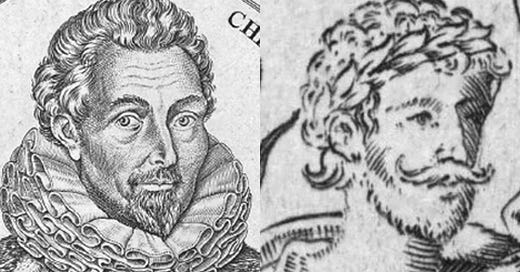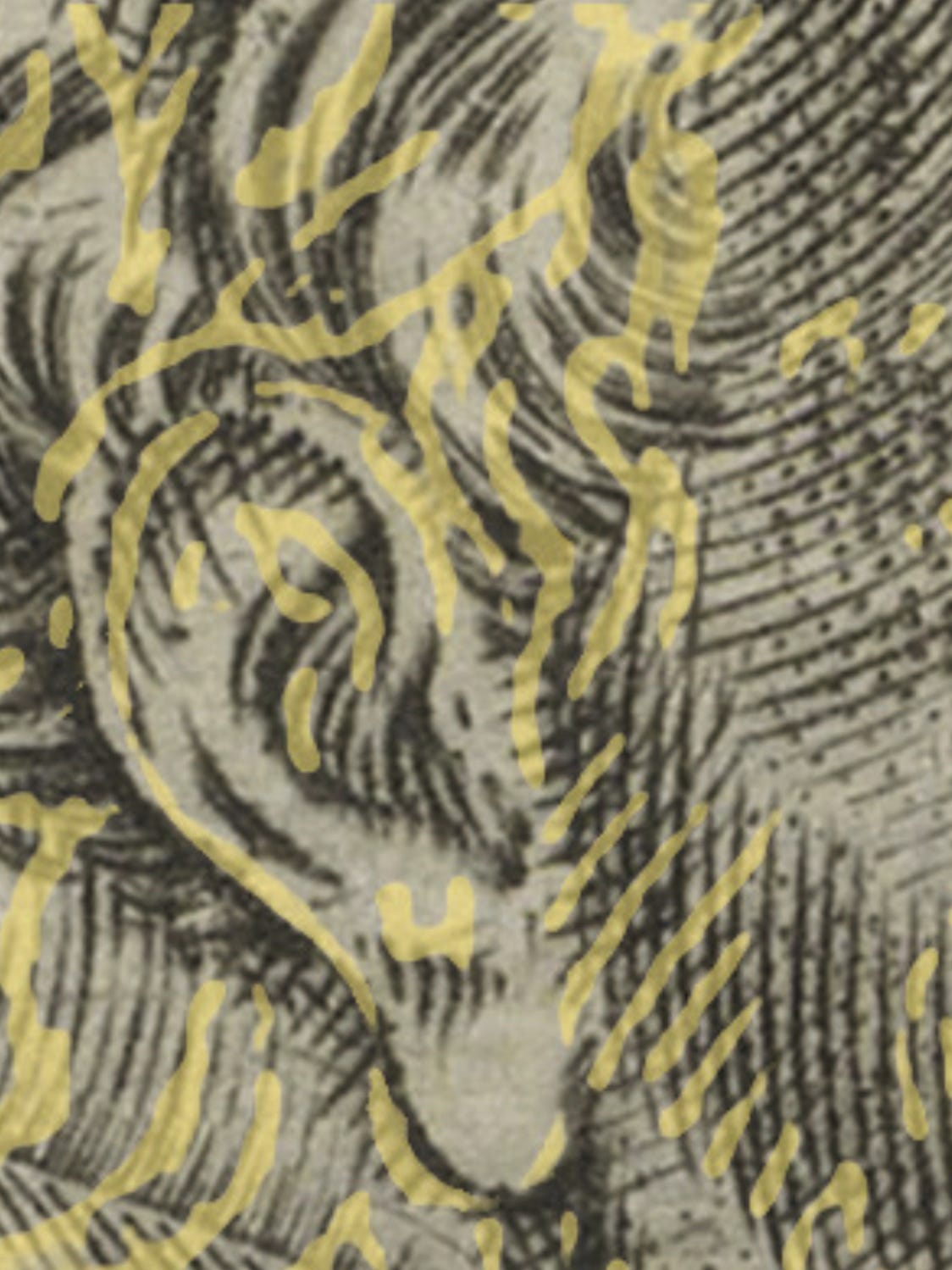Continuing on the concrete evidence and similarities between the two, it is important to now talk about a scoop on the cover of the prestigious Country Life magazine: the botanist and historian Mark Griffiths, in the issue of 20 May 2015, revealed for the first time the only face, portrayed when he was alive, of William Shakespeare. The face, demonstrably authentic, is on the title page of The Herball by John Gerard, a 16th century botany manualThe fourth character, at the bottom right of the frontispiece, is identified with very convincing motivations, as the author of the poem “Venus and Adonis”, signed Shakespeare. This is because the flower he holds in his hand, the Fritillaria Meleagris, just imported by the botanist Gerard from France, is mentioned only in that poem, indeed, it comes from the author of the poem, replaced with the traditional anemone in which it is transformed Adonis into Ovid's original Metamorphoses! The laurel wreath and ancient Roman theatrical dress indicate him as a poet and playwright. This discovery, conducted with scientific severity and with very solid foundations, however, did not convince many. Because, in truth, he has a weak point: that beautiful poet's face does not at all resemble Shakespeare, as Griffiths proposes. And a big problem immediately arises: the face of this "fourth man" is identical to that of the humanist John Florio!
And he is right, Griffiths writes: “Because the fourth man can be none other than Shakespeare” and he is right, it is truly the portrait of the author of “Venus and Adonis”, not written by the actor from Stratford but by Florio, signing himself Shakespeare! And even the monogram that flanks the portrait is deciphered like Shakespeare.
A relationship of knowledge also emerges between the botanist Gerard and the poet: the botanist was supported in his nomenclatures with Latin and Greek, the writer gave scientific bases to the magic potions, medicines and poisons he used in his plots .
Returning to the comparison between the portraits made in the article, this is unfortunately ridiculous! It is the only moment of failure in the entire research, which was otherwise very rigorous.
The drawing does not resemble the (posthumous) portraits of Shakespeare that the author of the article proposes.
Here are the images:
The magazine page with the comparison between the portraits.
But instead it is very similar to Florio's portrait: The nose, long and straight, with the identical slight hump, the other short; the forehead, in the regular and narrow design and the other globular, the shape of the eyebrows, the same shadow of the cheekbone. As for the hair, one is curly, the other is straight. Here we must remember sonnet 20 in which the poet complains that his curls are turning white! Shaksper's curls?!
Griffiths then describes the singular earlobe as very elongated in a singular way; he underlines that: “The lobule, the lower part of the lobe, is particularly elongated and narrow, ending with a fleshy spur”.
Just like Florio's singular ear!
The author of this important discovery described this ear in such detail because he had seen and studied it; but both in Country Life magazine and throughout the web, little mystery, all the ears of the "fourth man" have their lobes erased. You can't find a whole one! In this regard we tried to contact the historian and botanist Mark Griffiths without response... but two points were saved from the erasure of the ear; by joining them I rebuilt the lobe.
This intervention of mine has an aspect of subjectivity and it is not possible to make a scientific comparison... but I propose it anyway: in any case the comparison is astonishing and convincing! The ear, so singular, is like a fingerprint, and it is the same in the two portraits.
The two ears overlap exactly.
The similarity between the two seems absolute, but due to its importance we sought a very authoritative confirmation. The portraits of Florio and the "fourth man" were submitted to the Scientific Investigations Department of the Carabinieri for comparison, and this is the result:
CONCLUSIONS
Despite the limitations due above all to the fact that the compared images are a portrait and a hand-made drawing without attention to the smallest details, the similarities found between the compared images allow us to express a judgment of COMPATIBILITY. These similarities are strengthened by the instrumental analysis which provided a score of 0.476 higher than the threshold value.
Therefore, the results obtained suggest that the two faces under analysis can be traced back to the same subject identified as John FLORIO.
Laboratory analyzes and conclusions carried out by: Director Lt. Col. inv.sc. Claudio Ciampini
~~~~~~~~
Among the many clues, this one looks a lot like a test! A scientific, anthroposomatic proof: If Griffiths is right to state that the "fourth man" composed Venus and Adonis, then Florio wrote Shakespeare's works!








